The Blog
French Cruise
Burgundy
Beaujolais
Côtes du Rhône (May 8, 2015)
The next winecation has finally arrived. The planning stages of cork and fork hopping through the French wine regions of Burgundy, Beaujolais and The Rhone Valley began last summer; picked up steam and passengers in the fall; and just last week – the final vineyard visit has been settled. I and 13 avid wine and food fans will fly into Paris and Lyon this weekend.
And I can’t wait.
My goal here is not to gloat or start a small food fight. I only want to prime the pump for those that are going and encourage those that will not be with us to really consider jumping onboard when the next opportunity comes along. It could even be Tuscany or Spain in the fall…if you want it to be. More on that later.
The final plans for the current trip to France finally came together after inking the deal to visit Chateau Mourges du Gres, a small Rhone Valley producer on the southern Rhone River just east of Arles, France. The husband and wife team of Anne and Francois Collard were so kind in inviting our crew from Wisconsin that I cancelled a visit with a much larger producer. The intimate vineyard feel and extra attention trumps a hoity-toity well-known Chateau every time. We will be toasting the wines and the work of Anne and Francois at their vineyard over lunch on Monday, May 18.
France Highlights
This trip will be unique. After a few days in Paris for some and Lyon for my small group, the two traveling teams will meet at our “hotel” in the small town of Chalon-sur-Saône, on the Saône River. Our living quarters for the week is a tricked out Viking longboat that houses just 160 passengers, includes only one restaurant, two bars and one long, stretched-out sundeck. The weather forecast is to be in the 80’s as we reach the southern part of the Rhone River next week.
We begin the tour in the wine region of Burgundy as we’ll stop and taste in Beaune, Tournas, Cluny and Macôn. Burgundy wines are simple to understand. You’ve got Chardonnay and you’ve got Pinot Noir. That’s it. And, they are the best of both that the world has ever known. We will be too far south on the Saône to visit the elite Pinot Noir cellars (Côte de Nuits), but the wines that we will sample from Beaune to Macôn are not bad alternatives. Beaune is known for the richest of the French Chardonnays and Macôn for their warmer climate style of wines kissed with pineapple and white peach. Both will be spectacular in the open air and warm valley sun.
While the Burgundy region is known to anyone and everyone who has ever taken wine seriously and has been making distinguishing wine for nearly a thousand years, the area is quite small. There are only about 13,500 acres of vines in Burgundy’s largest Côte d’Or region, as opposed to Bordeaux’s 235,000 acres or even Napa Valley’s 45,000 acres (California totals 515,000). Oregon is a good comparison in size with a nearly identical 13,700 vineyard acres of planted vines.
We expect to see a striking change in the landscape and the wine and food as we sail south of Beaune and into Macôn. This is where an invisible line, distinguishing the north from the south, cool from warm, divides the country. The buildings will appear different too as we go from grays and browns to bright Mediterranean colors with curved rooftops. We will taste the Chardonnays from the best Pouilly-Fuisse vineyards at a growers cooperative cellar just outside of Macôn (L’Atrium) before cruising into Lyon the next day and into the heart of Gamay country and the wines of Beaujolais.
Two wine regions in three days and the Rhone Valley on the horizon will certainly make me giddy, but it is the food of Lyon that has me feeling like a 16-year-old on his first date. Lyon is known as the gastronomical capitol of France (take that Paris) and it is the Bouchon that has made Lyon famous. A Bouchon is a style of restaurant and wine bar in Lyon that serves traditional Lyonnaise cuisine…meaty items like spiced sausages, duck pâté, Bresse chicken or roast pork. Bresse chicken is popular in that every Bouchon has their own unique version. The chicken itself is very French and even matches the country flag with its blue feet, snow white feathers and bright red comb.
We will leave the cruise ship for a special night in Lyon as our fearless fourteen have reservations at Bouchon des Filles, a top-ten Lyonnaise restaurant that is tucked into an out-of-the-way alley, away from tourists, and run by the creative hands of two charming women, Isabelle Comerro and Laura Vildi. They have planned a 4-course dinner along with a Viognier from the Rhone, a Beaujolais blanc and Beaujolais rosé, and a Gamay from Morgon. I spoke with Isabelle and she asked if we would like to finish with a Rhone red or a Morgon. I had to opt for the Morgon, a wine from the region whose grapes are grown from aging schist and crumbling granite soils and one that has a distinctive flavor of bright berry Gamay and stony remnants. The choice was simple. Morgon is hard to find in the U.S. and we will have our fill of Rhone reds later on this journey.
On Sunday of next week we will be in Tournon tasting Rhone wines in the morning at a vineyard chosen by the people at Viking and on to the medieval and Renaissance buildings of Old Town Viviers, just in time for dinner. We will sleep in Viviers and dream of visiting Van Gogh’s old stomping grounds the next morning while discovering more Grenache and Syrah along the way.
The new week begins in Arles, a city with very cool architecture and ancient sites, including a Roman arena that once sat 20,000; and
it’s the city of vibrant colors and striking natural light. We will see where Van Gogh lived and what inspired him on canvas. We visit our new friends Anne and Francois Collard at Chateau Mourges du Gres in the afternoon for a tasting and lunch.
Here’s the simple yet regionally perfect menu from Anne at Chateau Mourges du Gres:
Eggplant terrine with tomato sauce Charcuterie Plate Pasta Salad with tomatoes Goat Cake Fresh Cherry from the estate And…more wine from the estate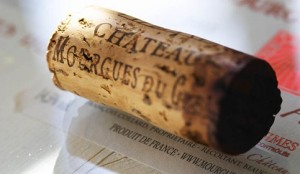
Next is Avignon, nicknamed the “City of Popes,” as this is where seven Popes called home from 1309 to 1377. We will tour the wine region of Chateauneuf du Pape (House of the Pope) and taste wines with Claude at Verger des Papes (Orchard of the Popes). We’ll be in Pope Heaven as we enjoy lunch outside on their veranda that overlooks the vineyard and valley. We’ll be in no rush to return to our hotel on the Rhone as the ship will be docked overnight, our last one in France.
A wine tasting will be planned back in Wisconsin to reacquaint ourselves with the three French wine regions (and food) and introduce others to what they missed. This will be open to all…so stay tuned and look for our pictures and stories at the end of May.
The Next Tour
Where to go next? LaMacchia Travel and corkmeetsfork are willing to sneak in a quick visit to either Italy or Spain this fall. We could not fill up our last trip to Spain but are willing to give it another try. The vineyard owners are still waiting for us. Italy is a no brainer and always seems to fill up as soon as it’s announced. This time through, I’m thinking Alto Adige in the north for three days and Tuscany and our very own villa to finish the trip. We would depart in late September or early October of 2015. I’d like to hear those that are interested.
Eat well…Drink well… 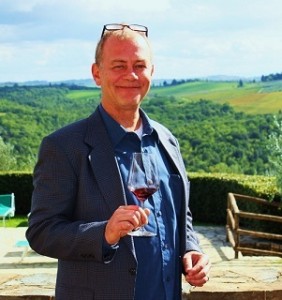
Cheers!
Robert J. Mitchell
Did you know?
The Chablis Appellation in Burgundy is separate (to the north) from the rest of the well-known French wine region and it’s actually closer to Champagne than Burgundy. The dominant soil there is called “Kemmeridgian” limestone (the same as Champagne). The white chalky texture retains and reflects the warmth of the sun, which helps the grapes ripen and adds that “Chablis crispness” to their very special wines. And most importantly, all wines are white and only contain the Chardonnay grape. _________________________________________________Recipe Myths
And other kitchen lies
(April 16, 2015)
Have you ever come across a recipe…you gave it your best shot…but somehow a step went horribly wrong and the dish didn’t come out looking anything like the picture and tasted like prison food? It may not have been your fault. Maybe, the creator of the recipe, the heralded chef with five restaurants, provided you with bad information? Maybe, just maybe, it wasn’t you at all.
I like to read recipes for ideas but seldom follow them step-by-step. For one, I’ve developed confidence in being able to take a cooking idea and alter it to my taste and ingredient preference. Secondly, I’ve been burned by suggested cooking times and short-cut tricks that simply just don’t work. Today, I take the cover off those myths.
But before we begin debunking, let’s talk Irish whiskey. There are a few openings at Ashling on the Lough on Thursday for our first ever Irish Whiskey Tasting. We will taste five very different fermented grain mash beverages from the land that gave us St. Patrick’s Day and the Riverdance. Candied dates wrapped in bacon, corned beef and cabbage rolls and Ashling’s famous root vegetable soup (with a twist) will be paired with the whiskey from Ireland. Guinness and Harp chasers will also be served to balance the palate. The tasting begins at 6pm and the cost is $20. Email corkmeetsfork to reserve.
We have also scheduled a meeting for those joining us in France this spring. Circle Thursday, April 16 on your calendar for a group gathering at LaMacchia Travel. Tom Karnes and I will discuss the final itinerary for our May wine and food cruise through Burgundy and the Rhone Valley and answer any questions. We will sample wine from the area and invite others that may be interested in future wine and food trips to stop in. The meeting begins at 6pm. Please send an email to let us know you’ll be coming.
Also, look for more information in the next few weeks on our annual UW-Parkside Business Graduate food and wine tasting fundraiser at Casa Capri on April 17. We have something delicious up our apron.
Recipe Myths
Bad experiences in life and in the kitchen can prevent a disaster from happening twice. Some may not think that a tough-to-chew veal osso bucco, fall-apart gnocchi or a watered-down beef stock is a big deal, but I take my culinary failures seriously. And I never want them to happen again.
You cook and you learn. But, the most frustrating failures are those that happen when you do everything right. You follow directions. You don’t miss a step. The recipe couldn’t possibly be wrong. How could it? It’s a recipe dammit!
Recipes and cooking instruction fall into the same trap as that of an urban legend. An idea or concept gets repeated so many times that it must be true. Such as, “Adding salt to your pasta water will increase the boiling point.” That is true in theory, but in reality, it would take 2 cups of salt added to 8 cups of water to increase the boiling point by 12 degrees Fahrenheit. That’s way too much salt to make a difference. Salt should be added to boiling pasta to add flavor. Salt, just a pinch or two, should also be added once the water begins to boil. This will allow for optimum flavor before the salt begins to break down.
Reduction Sauce Redo
So many recipes, so little time allotted to reducing stocks and sauces. Many recipes call for creating a stock with vegetables, meats and sometimes bones. After cooking the stock and removing the solids, the silky and flavor-rich liquid is all that is left. Reducing the stock (thickening the sauce) makes for a textured and delicious gravy. I have encountered countless recipes that suggest, “bring the stock to a boil and simmer for 15-minutes.” Never gonna happen. To truly reduce a stock, it will take an hour or more to thicken properly. Make the time if you can. A naturally reduced stock is far better than one that needed corn starch.
My Soufflé!
A soufflé is an elegant confection that rises due to expanding air bubbles caused when softly beating the pure whiteness of the egg. Even the name sounds gentle. Shocking this delicate creation by shouting or slamming the oven door will shock its fragile makeup and cause it to collapse upon itself. Professional pastry chefs say it isn’t so and many have tested this soufflé survival theory. Though not a recipe miscue, it is certainly an underestimate of the true strength of a soufflé.
To Braise is to Laze
Chiseling ice sheets off frozen windshields and wearing a scarf to bed are overrated. Enjoying braised meats while in the midst of a nasty polar vortex is the only reason I live in Wisconsin after Christmas. Winter is long and braised meats take time. It’s a perfect marriage.
To braise is to cook slow and low. The process is all about searing the meat first, long cooking times, a tight-fitted lid and an oven that is comfortable sitting at 180 to 220 degrees. The liquid in the pot or pan should never cover the meat. You’re not boiling, you’re braising. The end result is a fall-apart-tender shoulder or shank of beef, pork or lamb. But how long does this really take?
Many recipes call for a 2 to 3 hour cooking time and an oven temperature of 250 to 300 degrees. I think that is too hot and not nearly enough time at that temperature or my “go low” suggestion. I’ve been very unhappy with braised meats in 3 hours and even in 4. I find that in hour number 5, the fat begins to truly breakdown. I will always test the meat with a fork. When the fork enters easily and the meat is soooo wanting to be pulled apart, it is ready. This perfection often occurs in hour number 6. The extra wait takes more time off that winter clock.
Fresh Juice?
Recipes often suggest using fresh-squeezed lemon juice over seafood and pasta dishes. Planning ahead will provide even more flavor.
Boston-based chefs Jody Adams (Rialto) and Todd English (Olives) always claimed that allowing the fresh lemon juice to sit for 3-4 hours after squeezing will enhance the flavor. The extra time allows for the bitter but harmless compound, limonin, a chance to mellow and adds a more complex flavor to the citrus juice. The opposite is true of orange and grapefruit juices, as the limonin becomes stronger the longer they are exposed to oxygen.
And another thing…
There are many other “food facts” that have become distorted. Here are my favorites.
The bloody steak
This is not a cover up. The red juice in raw red meat is not blood. Most of the blood is removed from meat during the butchering process. Blood is barely present in chicken or pork (white meat) when purchased. Only a small amount of blood remains within the muscle.
Red meats are composed of muscle, fat and water. The water, mixed with a “red meat” protein called myoglobin, creates that red liquid.
Myoglobin stores oxygen in muscle cells, much like hemoglobin stores oxygen in red blood cells. This is necessary for muscles which need oxygen for energy during frequent and continual usage. Myoglobin is highly pigmented, and most often colored red. The more myoglobin, the more red the meat will look and the darker it will get when cooked.
Is that a Potato in your pantry?
Throw it in your salty soup or stock.
A potato will not absorb salt. This is an old wives tale. Adding more liquid and other unsalted ingredients will help to dilute the mistake.
Acid doesn’t rock
Many people believe that an acidic marinade of wine, vinegar, or citrus juice will help tenderize meat. The opposite is actually true. Acid interacts with the proteins in the meat, causing the protein molecules to pack more closely together and squeeze the liquid out of the meat. This will dry out your beef or pork and will create a mushy texture on the outside edges.
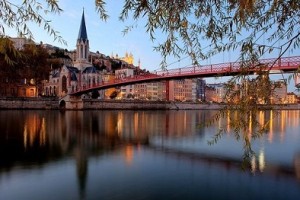
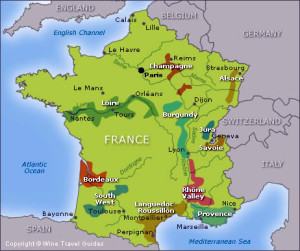

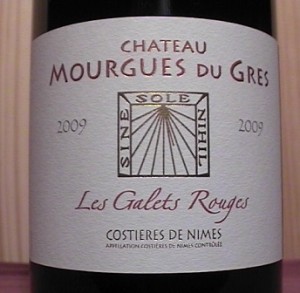
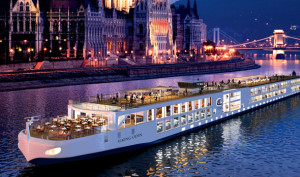
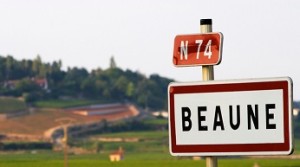
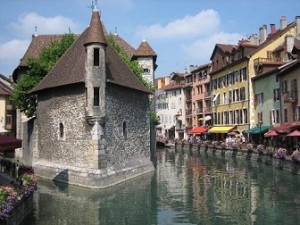
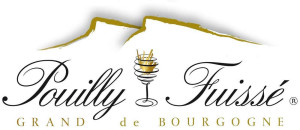
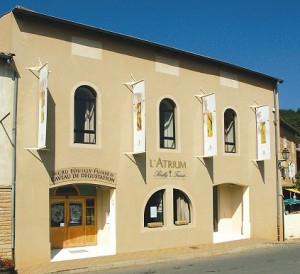
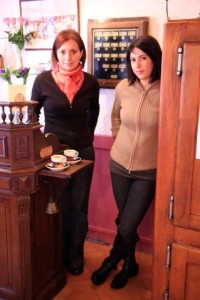
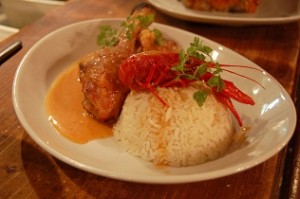

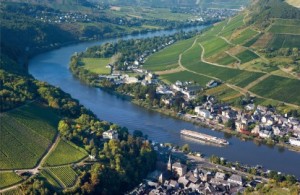
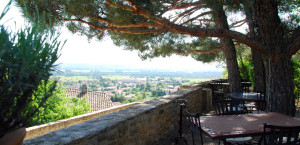
Leave a Reply